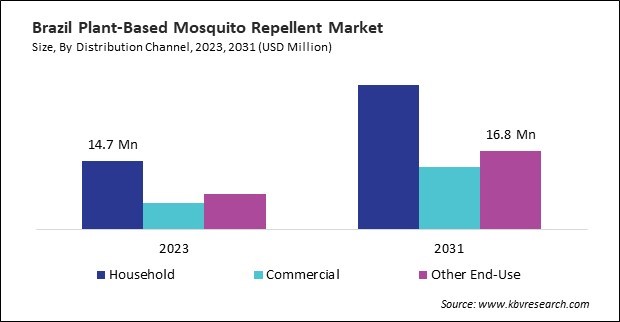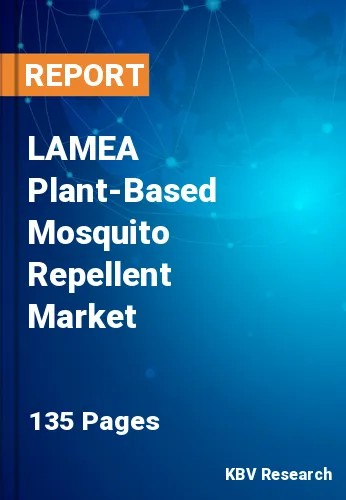The Latin America, Middle East and Africa Plant-based Mosquito Repellent Market would witness market growth of 11.5% CAGR during the forecast period (2024-2031).
The Brazil market dominated the LAMEA Plant-Based Mosquito Repellent Market by Country in 2023, and would continue to be a dominant market till 2031; thereby, achieving a market value of $61.1 million by 2031. The Argentina market is showcasing a CAGR of 12.3% during (2024 - 2031). Additionally, The UAE market would register a CAGR of 10.6% during (2024 - 2031).

Human self-poisoning through ingestion or excessive dermal application has been observed to cause neurological effects, such as encephalopathy and seizures. Studies on human nasal mucosal cells, Hodgkin lymphoma, and soft tissue sarcomas have observed that DEET may have carcinogenic effects. As a result, plant-based repellents are becoming an attractive option for consumers seeking effective protection without the risks associated with chemical exposure.
In addition to health concerns, environmental issues play a crucial role in shifting consumer preferences. Synthetic chemical-based repellents, particularly water bodies and non-target organisms, can negatively impact the environment. DEET, for example, has been found in waterways and can harm aquatic life, disrupting ecosystems when it is washed off the skin and into the environment.
In many countries across the LAMEA region, the climate and ecological conditions make mosquito control an essential concern. Governments and public health campaigns have started promoting natural solutions as part of broader initiatives to improve health outcomes and reduce chemical exposure. These efforts, alongside the availability of locally sourced natural ingredients, are boosting the adoption of plant-based repellents, making them accessible and affordable for the masses. The market is evolving with a focus on sustainability and safety, addressing the region’s unique health and environmental needs.
Free Valuable Insights: The Worldwide Plant-Based Mosquito Repellent Market is Projected to reach USD 3.1 Billion by 2031, at a CAGR of 9.8%
Based on End-Use, the market is segmented into Household, Commercial, and Other End-Use. Based on Age Group, the market is segmented into Adults, Children, and Other Age Group. Based on Product Type, the market is segmented into Sprays & Aerosols, Lotions & Creams, Candles & Coils, and Other Product Type. Based on Distribution Channel, the market is segmented into Hypermarkets & Supermarkets, Online Stores, Independent Stores, and Other Distribution Channel. Based on countries, the market is segmented into Brazil, Argentina, UAE, Saudi Arabia, South Africa, Nigeria, and Rest of LAMEA.
By End-Use
By Age Group
By Product Type
By Distribution Channel
By Country
Our team of dedicated experts can provide you with attractive expansion opportunities for your business.

